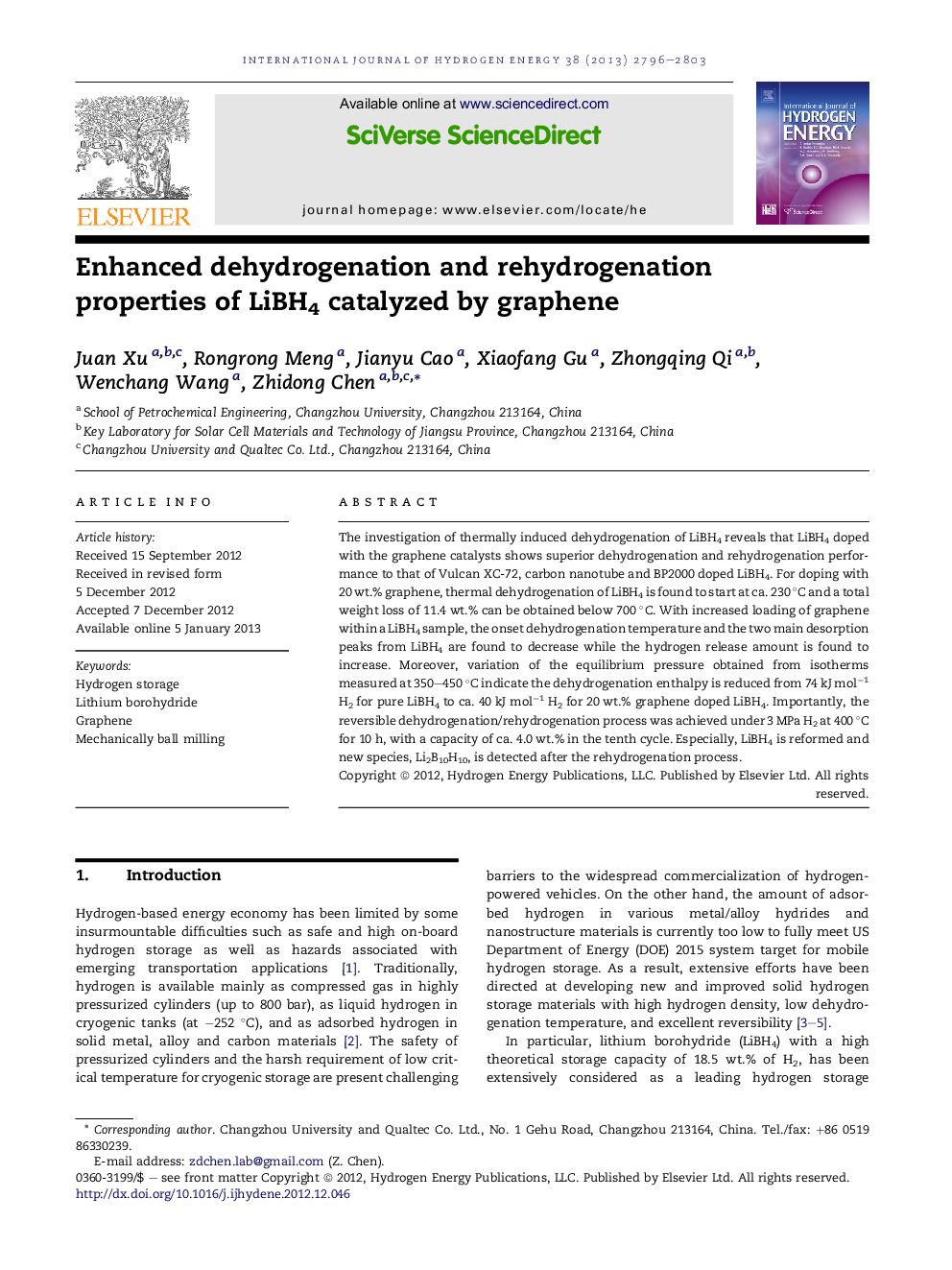| Article ID | Journal | Published Year | Pages | File Type |
|---|---|---|---|---|
| 1273812 | International Journal of Hydrogen Energy | 2013 | 8 Pages |
The investigation of thermally induced dehydrogenation of LiBH4 reveals that LiBH4 doped with the graphene catalysts shows superior dehydrogenation and rehydrogenation performance to that of Vulcan XC-72, carbon nanotube and BP2000 doped LiBH4. For doping with 20 wt.% graphene, thermal dehydrogenation of LiBH4 is found to start at ca. 230 °C and a total weight loss of 11.4 wt.% can be obtained below 700 °C. With increased loading of graphene within a LiBH4 sample, the onset dehydrogenation temperature and the two main desorption peaks from LiBH4 are found to decrease while the hydrogen release amount is found to increase. Moreover, variation of the equilibrium pressure obtained from isotherms measured at 350–450 °C indicate the dehydrogenation enthalpy is reduced from 74 kJ mol−1 H2 for pure LiBH4 to ca. 40 kJ mol−1 H2 for 20 wt.% graphene doped LiBH4. Importantly, the reversible dehydrogenation/rehydrogenation process was achieved under 3 MPa H2 at 400 °C for 10 h, with a capacity of ca. 4.0 wt.% in the tenth cycle. Especially, LiBH4 is reformed and new species, Li2B10H10, is detected after the rehydrogenation process.
► Graphene was used to enhance the hydrogen release and uptake properties of LiBH4. ► Graphene shows superior catalytic effect to Vulcan XC-72, MWCNTs and BP2000. ► The dehydrogenation enthalpy is reduced to ∼40 kJ mol−1 for 20% graphene doped LiBH4. ► A reversible rehydrogenation was achieved under mild condition, with a high capacity. ► LiBH4 is reformed and new species, Li2B10H10, is detected after the rehydrogenation.
